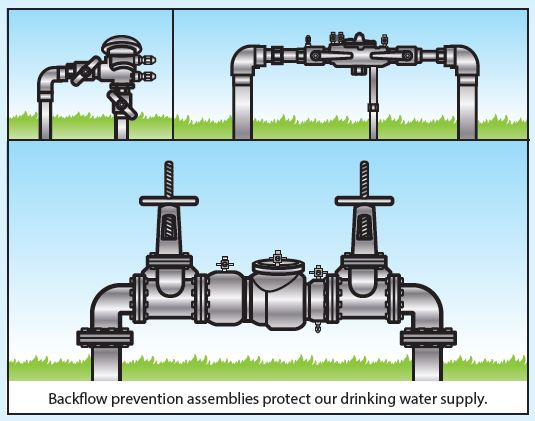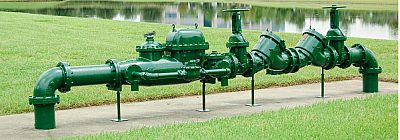
A cross-connection is a point in a plumbing system where the potable (drinking) water supply is or can be connected to a non-potable source (water not intended for drinking). There are two types of cross-connections, direct and indirect. A Direct Cross-Connection is a connection on a potable water system by a non-potable pressurized line such as irrigation lines, boiler lines, chemical transfer lines, etc. An Indirect Cross-Connection is a connection on a potable water system by a line, or hose, and is usually open at one end. Examples of Indirect Cross-Connections are garden hoses, sprinkler systems, water softeners, bathtubs, showers, wash basins, etc. Some examples of Indirect Cross-Connections made with a garden hose are:
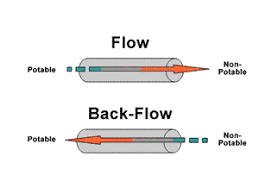
“Backflow” means the undesirable reversal of flow of water. This is through a cross connection into the public water system or consumer’s potable water system.
Backflow is the flow of water (or other solid, liquid, or gas from any source) back into the potable water supply. Backflow may be due to either: Backsiphonage; or Backpressure.
“Backsiphonage” means backflow due to a reduction in system pressure in the purveyor’s distribution system and/or consumer’s water system. “Backpressure” means a pressure (caused by a pump, elevated tank or piping, boiler, or other means) on the consumer’s side of the service connection that is greater than the pressure provided by the public water system and which may cause backflow.
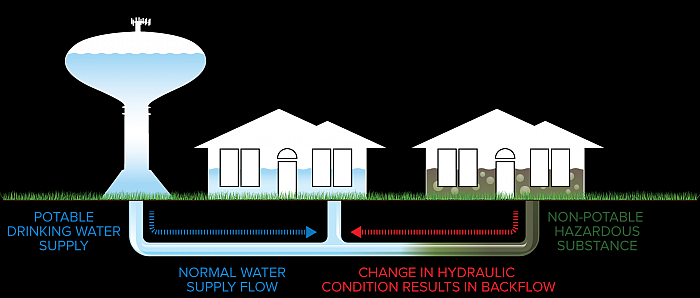
Backsiphonage is backflow caused by negative pressure in the water supply piping. This occurs when system pressure is reduced below atmospheric pressure. The effect is similar to sipping water through a straw.
The following scenario illustrates how back siphonage backflow conditions could occur in a public water system:
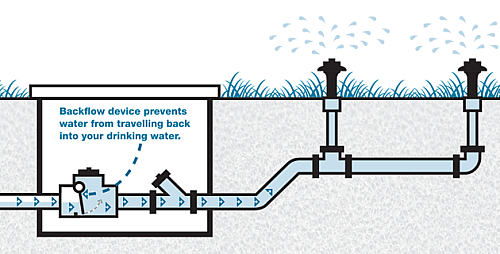
Keep drinking water safe from contaminates is easy. Find and eliminate Cross-Connections. Install Backflow devices, assemblies, or air gaps. Install hose bib vacuum breakers on water fixtures. Something as useful as your garden hose has the potential to contaminate your home’s water supply. More than half of the nation’s Cross-Connections involve unprotected garden hoses.
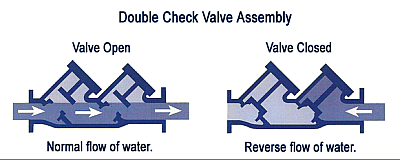
Backflow can be prevented in two ways. Either through the installation of an air gap that provides a separation between the contaminated water and the drinking water or devices or assemblies that prevent the occurring backflow.
